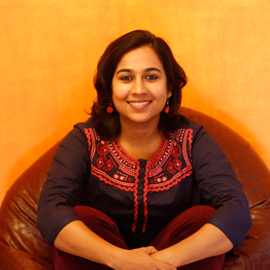Of real Dangal girls & Bollywood bombshells: When will movies make sportswomen look real?

Dangal is no doubt the film of 2016. Its a movie that leaves you ashamed you never bothered to follow women's wrestling or tune into the incredible journey of hardship and sacrifice that built the Phogat sisters and others of their kind.
But there's one scene in the movie that left me arrested - as the crowds rose to leave, were two images just before the credits rolled, of two women, so unlike each other - Fatima Sana Shaikh (who played Geeta) and beside it, the real Geeta Phogat - dark skinned, muscular, angular features, undone eyebrows, unstyled hair held back by a plastic bow and a bright smile.
She could've been the head girl of a small town school. Not quintessentially beautiful or sexy. She was just an ordinary looking girl who had done something extraordinary.
And that was the story that Fatima Sana Shaikh, couldn't succeed telling. Her flawless white skin, perfect dimples and teeth, baby pink lips, perfect hair and elite demeanour (have you watched anyone eat a gol gappas with more elan?) tells us a worrying story of an India that refuses to accept its sportswomen for what they do.
We swear allegiance only if they've passed the beauty test. We need them to run, serve, sprint, wrestle, box, swim, dive, leap, trap, throw, twirl, lift and pound away in a body shaped to ooze sexuality. It is the reason why Google throws up 1,66,00,000 search results for "Sania Mirza hot" and only 91,90,000 results for "Sania Mirza".
The fear of portraying the ordinary
"Arrey, who would come to watch these girls play any sport unless they were sexy?" asks a male viewer, loudly in the theatre hall.
Gymnast Deepa Karmakar, boxing champion Mary Kom, the Phogat sisters and countless other women champions are often not noticed for not looking sexy and for being "too dark", for looking "like a horse" or being too "bony" or "stalky" or "muscly" or "manly".
When Priyanka Chopra acted as Mary Kom in her biopic, social media was replete with criticism at the casting director's choice of the lead actor. Couldn't they pick a north eastern face at least? Where was the realistic portrayal of Kom's short, nimble, flyweight physical appearance? How often do national and international champions from small towns look like heroines like PC?
Imagine the Dangal girls to be a few shades darker with patchy skin or a couple of zits on their faces or underarm hair? Would it have taken away from their grit and the raw power of their fight? I think it would've added to it.
When will producers stop feeding onto the bandwagon of unrealistic expectations of conventional beauty norms?
We want to be sexy size-zero super moms who multitask a career and raise genius kids. We want dynamic bahus who are tall, fair, beautiful with both modernity and traditional roots. We want our national champion sportswomen to look like ramp models. When will Bollywood heroines be reflections of how real women look and act?
It isn't surprising that Bollywood opts for a known and tested route. What is surprising is that Aamir Khan, who is known for his off-the-beaten-track work, does it. Perhaps if Bollywood made realism a priority, we viewers would follow suit - accepting our women for what they are, and not always, for how they look; making a reality check of our expectations, a priority in our own lives.
That's when we will appreciate the real Dangal girls for what they truly are - pure power, grit and inspiration.
Edited by Jhinuk Sen
First published: 27 December 2016, 5:10 IST






![BJP's Kapil Mishra recreates Shankar Mahadevan’s ‘Breathless’ song to highlight Delhi pollution [WATCH] BJP's Kapil Mishra recreates Shankar Mahadevan’s ‘Breathless’ song to highlight Delhi pollution [WATCH]](https://images.catchnews.com/upload/2022/11/03/kapil-mishra_240884_300x172.png)

![Anupam Kher shares pictures of his toned body on 67th birthday [MUST SEE] Anupam Kher shares pictures of his toned body on 67th birthday [MUST SEE]](https://images.catchnews.com/upload/2022/03/07/Anupam_kher_231145_300x172.jpg)






